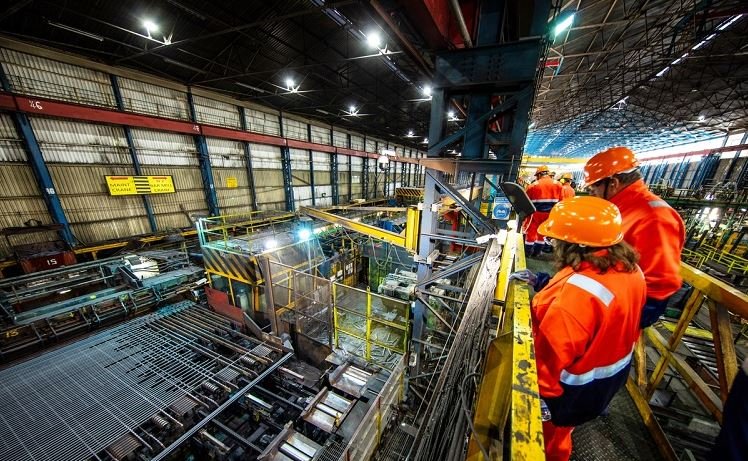Sustainable rail construction materials have gained prominence in recent years as the rail industry embraces eco-friendly practices. With the increasing focus on reducing the environmental impact of construction, rail projects are adopting innovative materials that are durable, efficient, and environmentally responsible. The shift toward sustainability in rail construction helps minimize resource consumption, reduce carbon emissions, and improve the overall longevity of railway infrastructure.

Recycled Steel and Concrete
The use of recycled steel and concrete in rail construction has become a common practice, significantly reducing the environmental impact. Steel is one of the primary materials use in rail tracks and bridges, and opting for recycled steel lowers the demand for virgin steel production, which is highly energy-intensive. Recycled steel retains the same strength and durability as new steel, making it a sustainable alternative that maintains the integrity of railway structures.
Concrete, another key material in rail construction, is now being produce using recycle aggregates. By reusing materials such as crushed concrete and reclaimed asphalt, the rail industry reduces the need for new raw materials and minimizes construction waste. Additionally, advances in green concrete technology, including the use of fly ash and slag, further reduce carbon emissions associated with concrete production. These sustainable alternatives make concrete a more environmentally friendly choice for building railway foundations and tunnels.
Composite Sleepers
Composite sleepers represent another major advancement in sustainable rail construction materials. Traditionally, railway sleepers (also known as railroad ties) were made from wood, contributing to deforestation and requiring regular maintenance due to decay. The introduction of composite sleepers, made from recycled plastics, rubber, and other sustainable materials, has transformed the industry by providing a more durable and eco-friendly solution.
Composite sleepers have a longer lifespan compared to traditional wooden sleepers, reducing the frequency of replacement and maintenance. They are also resistant to rot, insect damage, and harsh weather conditions, making them ideal for long-term use. Furthermore, these sleepers contribute to the reduction of plastic waste by repurposing post-consumer plastic products. The environmental benefits of composite sleepers align with the rail industry’s goal of reducing its carbon footprint and promoting sustainable construction practices.
Green Roofing and Vegetated Embankments
Incorporating green roofing and vegetated embankments in rail construction projects promotes sustainability while improving the surrounding environment. Green roofs, installed on rail stations, depots, and other rail-related buildings, help reduce energy consumption by providing natural insulation and lowering heating and cooling costs. These roofs also enhance urban biodiversity, absorb rainwater, and reduce stormwater runoff, mitigating the urban heat island effect in densely populated areas.
Vegetated embankments along railway lines also contribute to sustainability by stabilizing soil, reducing erosion, and enhancing the aesthetics of rail corridors. These embankments are plants with native grasses, shrubs, and trees that help improve air quality, provide habitats for wildlife, and reduce the need for artificial drainage systems. By incorporating green infrastructure into rail construction, the industry not only improves environmental sustainability but also fosters a more harmonious relationship between railways and their surrounding ecosystems.
Low-Carbon Asphalt and Ballast
Low-carbon asphalt is another innovation in sustainable rail construction materials. Asphalt is widely in use for constructing railway tracks and station platforms, and traditional asphalt production generates significant carbon emissions. However, by using recycled asphalt pavement and incorporating sustainable materials like bio-based binders, the rail industry can reduce the environmental impact of asphalt. Low-carbon asphalt requires less energy to produce and is more durable, reducing the need for frequent repairs and replacements.
Ballast, the crushed stone layer that supports rail tracks, is traditionally made from natural aggregates such as granite or limestone. However, the use of recycled materials like crushed concrete or slag for ballast is gaining popularity due to its sustainability benefits. Recycled ballast not only reduces the demand for new aggregates but also lowers the carbon footprint of transportation and extraction processes. Additionally, recycled ballast performs similarly to traditional materials in terms of strength and durability, making it a viable option for sustainable rail construction.
Conclusion
Sustainable rail construction materials are playing an increasingly important role in modern railway projects, reflecting the industry’s commitment to reducing environmental impact. By utilizing recycled steel and concrete, composite sleepers, green roofing, low-carbon asphalt, and recycled ballast, the rail sector is making significant strides in sustainability. These materials not only reduce resource consumption and emissions but also contribute to the longevity and resilience of railway infrastructure. As technology advances, the future of rail construction will likely see even more innovative and sustainable solutions that prioritize environmental stewardship.



